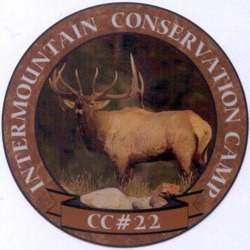Intermountain Conservation Camp #22
Intermountain Conservation Camp #22 is jointly operated by CDCR and the California Department of Forestry and Fire Protection (CAL FIRE). The camp’s primary mission is to provide incarcerated hand crews to support local, state, and federal responders during emergencies like fires and floods. Hand crews also complete community service and conservation projects year-round.

Contact Information
Address
24 Foothill Road, Bieber, CA 96009
Phone
(530) 294-5361
CDCR Camp Staff
- Lt. J. Struthers, Camp Commander
- Sgt. A. Pfadt, Assistant Camp Commander
About Intermountain Conservation Camp #22
Intermountain Conservation Camp #22 began in 1959 when CAL FIRE became interested in an 80-acre parcel of land owned by a local rancher. CAL FIRE wanted to establish a conservation camp on the property. After conducting some leaching tests and negotiating with the landowner, the property was purchased and construction began.
The camp did not have a pipeline, pump or an adequate well at that time. In fact, these components were not installed for six months, during which time the camp was supplied with water-by-water tankers. The tankers made three deliveries a day, supplying 3,500 gallons each time. The biggest problem the camp initially had was finding an adequate well. CAL FIRE was finally able to purchase an existing well on a small plot of land. The well provided the water the camp needed, but it also required over 2.5 miles of pipeline from the well to the water tanks. In June 1962, the camp was on line with water and ready for full operation.
Camp Projects
When not fighting fires, incarcerated hand crews perform conservation and community service projects. CAL FIRE determines conservation projects.
Intermountain Crews worked for the California Department of Transportation, building a shaded fuel break along Highway 299 over Hatchet Mountain. They also worked on shaded fuel breaks for the Shasta County Road Department along Dana/Glenburn Road, Clark Creek Road, and Goose Valley Road. These projects provide better visibility of animals on the right-of-way. Brushing along roadways allows sunlight to reach the right-of-way, reducing ice pack in winter and providing better visibility of signs, roadside markers, and drainage obstructions.
Crews built fuel breaks for fire protection and vegetation control for two local fire safe councils in the communities of Little Valley and Mt. Shasta. In addition, they completed fuel breaks around the town of Burney and the community of Cassel. They helped clean up the grounds of the Hillside Cemetery and assisted the Big Valley and Fall River School Districts with several painting projects. Crews continued their work for the Pit Resource Conservation District restoring wildlife habitat in Ash Valley and at Juniper Lake by reducing juniper.
Crews assisted the Inter-Mountain Fair of Shasta County in preparation of the fair, built a fence for the Ash Creek Wildlife Area and U.S. Forest Service, cleaned campgrounds in preparation of the camping season for the Department of Parks and Recreation and the Bureau of Land Management and provided fire defense improvement for the Adin Community Services District, Mayer’s Memorial Hospital District, the Adin and Lookout Fire Protection Districts and the Bieber and Burney Water Districts.
Intermountain Conservation Camp provides the local communities with tens of thousands of hours of project and conservation work each year.
Intermountain Conservation Camp’s in-camp project is metal fabrication using a welding shop.
Programs and Services
Just as in every CDCR prison, every conservation camp offers rehabilitative and educational services, including substance abuse programs, religious programs, and GED and college courses. Their efforts during emergencies build a strong work ethic and a feeling of self-worth. Together, these activities prepare the camp participants for a successful integration back into their communities upon release.
For more stories featuring current and former Conservation (Fire) Camp Program participants, read Inside CDCR.
Visiting can be a critical part of an incarcerated person’s rehabilitation. For more information, visit the Scheduling Visits at Conservation (Fire) Camps page.